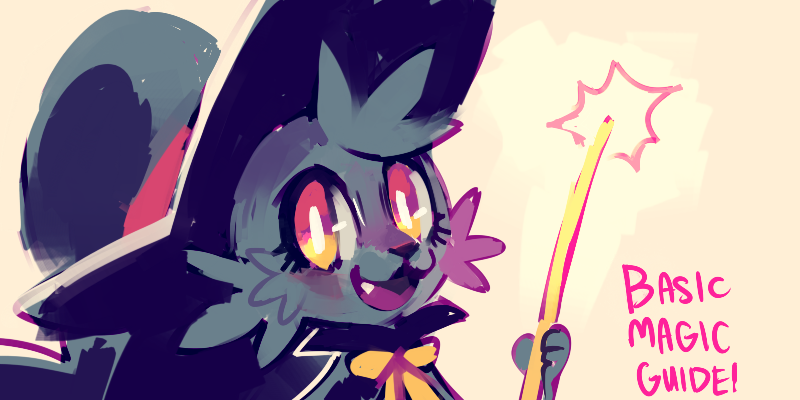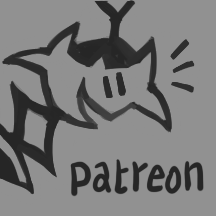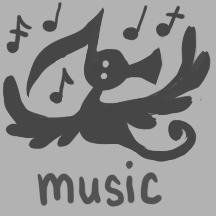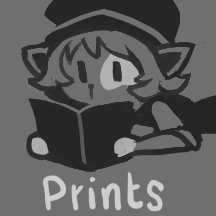Basic Guide to Magic

A Prudent Guide to Basic Magic in Flora
It's hard to narrow down "magic" into a manageable topic without breaking it into pieces. Magic is just such a ridiculously broad and vague concept, so to do something useful with it, easily-digestible chunks are required. Without the building blocks at least somewhat defined, it's hard to expect anyone to envision what they're going create.
There are five main categories of magic that you can expect to commonly see and hear about. They also correspond to a basic element and to a major sense.
- Incense - Smell - Fire
- Potions - Taste - Water
- Artifacts - Touch - Earth
- Incantations - Hearing - Air
- Runes - Sight - Spirit
By no means does this imply that someone who isn't of the corresponding elemental affinity would not be able to perform basic magic of that category. It does mean, however, that someone with, say, a Water or Water-based affinity would be slightly more naturally inclined to understand potion magic than someone without a Water or Water-based affinity. It's kind of like having a bonus. It doesn't prohibit anyone with another affinity from learning magic that doesn't correspond to their own affinity.
Incense
A loose definition of magical incense is: any magic that becomes modified as the magic is released from a source, either instantly or over time.
Neither fire nor smell are required for the incense to work or be called an incense, though oftentimes both fire and smell are involved. Any released magic, whether naturally occurring or intentional, and whether or not it has been modified by the act of being released, can be called incense.
Though similar to potion-making, incense is generally better-equipped to apply magic to larger areas or groups. And like potion-making, incense recipes can be modified according to a user's needs.
Common uses / occurrences
- Smoke-like barriers to keep magic or individuals in or out of an area
- Therapeutic aromatics, i.e. aromatherapy
- Sedative or hypnotic vapors
- Enhancing or dampening gases, i,e, flammable vapors to aid in explosions, or non-reactive mists to prevent explosions
Notable uses / occurrences
- Neck-Deep Mire's "Headlights", a naturally occurring magical swamp vapor that reacts when viewed, forming floating balls of light. These lights approach anyone who views them. They explode on contact with sentient creatures, so care should be taken not to look at them.
- Granny Jumbo's "Witch-n-Wizard Away", a smoke bomb. Anyone inside the smoke is thrown into a magically-induced coughing fit, which prevents the uttering of incantations and other spoken spells. To be used with caution, as the smoke affects everyone, not just witches and/or wizards.
- Teslic Pow-Max, a penetrating vapor that expands when exposed to electricity. Expansion is proportional to voltage. Used to promote internal detonation. Inhaling Teslic Pow-Max is not recommended.
- Aromi-Eau, a distillation of the dead flower of a Southern Gnoll. Every Aromi-Eau possesses some kind of healing therapeutic aroma when vaporized, and every Aromi-Eau's scent is unique.
Potions
Any concoction in any form (drink, salve, paste, etc.) which interacts with or uses magic in some way, intentionally or not, can be called a potion. Putting magical ingredients together via cookery is how most potions are produced.
Potions are thought to be one of the "easier" forms of magic to learn, as many recipes do not require the cook be magical, only that the instructions be followed. As potions are not an exact science, recipes and techniques may sometimes be modified as the cook desires. Ingredients can also be anything: herbs, other people, artifacts, you name it. Anything.
Some recipes do require outside magic, which is where non-magical individuals might run into problems. Some potions also degrade over time, leading to reduced potency or unintended side effects.
Common uses / occurrences
- Healing potions
- Magic antidotes / vaccines / poisons
- Potions that temporarily boost performance in something or imbue the target with a skill or knowledge
Notable uses / occurrences
- Granny Jumbo's "Kinkture", a highly potent liquid aphrodisiac which may be added to food or drink. Unlike traditional love potions, Kinkture will not alter how someone perceives or feels about someone else.
- Alchemaster Serendipitee's "Liquid Light", a thick, chalky substance marketed towards those afraid of the dark. When imbibed by an individual, a strong beam of magical light will shoot forth from that individual's every orifice for eight hours.
- Un-Mud, a body paint made from tar pits found only in the Gnoll territories of Crunchbone. Un-Mud acts as an insulator against magic, and Crunchbone Gnolls often cover themselves with it before entering battles against magic-users.
- Teslic Degreaser, a highly potent liquid that promotes the breakdown of elemental magic. Normally used to extract raw magic from environmental objects. Highly magical creatures, such as Drops are advised never to come into contact with Teslic Degreaser for any reason whatsoever.
Artifacts
Artifacts can utilize and interact with all other forms and types of magic. They usually draw upon the wielder's innate magic or understanding of the artifact in order to work. Non-magical or uneducated individuals may have difficulty using artifacts. They can either contain their own magic or require outside magic to function. Artifacts can lose their magic over time and after use; artifacts that are permanent require a great deal more skill and power to create, as do any artifacts that have highly desirable and beneficial effects.
Artifacts are generally thought to contain a part of its creator(s), which helps define the purpose(s) of the artifacts. It is draining on the soul to create many powerful artifacts within a short amount of time, and can break an individual. Almost without exception, artifacts require large amounts of magic, willpower, knowledge, and intent in order to be created. This easily makes artifact-crafting the most difficult category of magic, especially if the creator wants there to be a minimal amount of ill-effects from using the artifact.
Any immaterial or material object which interacts with magic, intentionally or not, can be called an artifact. An artifact may activate or deactivate or operate on any number of conditions.
Common uses / occurences
- Magic wands
- Golems
- Teleporters
- Anything from the mundane to the extravagant, as long as it interacts with magic
Notable uses / occurrences
- Scarey the Crow, a golem in the shape of a small crow. Likes to fly about forests at night and scare lone travelers. During the daytime, Scarey the Crow likes to dismantle actual scarecrows. Scarey the Crow is regarded as extremely annoying by farmers.
- Dead Scythe, a two-handed scythe of unknown origin, currently missing. Its blade is indestructible. It can cut anything, on one condition: the thing to about be cut must currently be dead. Objects having never possessed life cannot be cut by Dead Scythe.
- Crystalline Poncho, a light, shimmering garment. When worn, immediately causes most individuals to stop noticing the wearer. If worn for an extended period of time, the wearer becomes difficult for other people to remember.
- Stamp Academy, school building. After a tragedy resulting in the death of its faculty took place, the school was closed and abandoned. Years later, a group of ghost-hunters spent the night at Stamp Academy, hoping to record paranormal activity. They were found the next day, deceased, in the same manner the faculty was found. Entering Stamp Academy is not advised.
Incantations
Anything audible falls under the category of incantations. They don't have to be real words - humming, chanting, singing, random noise… if imbued with magic or magical intent, it can be an incantation. They do not need to be heard by anyone or anything, either, to work.
Incantations do not require an intelligent individual. Any sound, whether naturally occurring or intentional, and whether originating from an individual, a tool, instrument, or natural or unnatural source can count, if imbued with magical intent.
Generally understood as manipulating magic through sound waves. As such, any sound that interacts with magic, intentionally or not, can be called an incantation.
Common uses / occurrences
- Magical songs (bards often perform incantations)
- Spoken spells (such as someone uttering words before shooting a fireball or transforming an object or individual)
- High or low intensity sound waves that use magic to alter matter or other magic in some way
- As a note: a spellbooks fall under the category of incantations, even though the spells are written down. This is because the spells only work when spoken aloud, unlike runes that perform magic when simply written down.
Notable uses / occurrences
- Virtuoso Frogero is a very successful traveling street-bard. He imbues all his songs with the impulse and intent to give him money. Unsuspecting travelers who hear his songs often end up dirt-broke. Virtuoso Frogero is banned from playing in most major cities.
- Rotten, an undertaker from Void Forest, is able to hum at magical frequencies to deaden any kind of pain, spiritual or physical, in an individual.
- Quiet Storm, a rare atmospheric event which occurs in Candy Mesa. As wind blows through Candy Mesa's maze-like structure, it produces a low hum. This hum can echo through the area and build up to an intensity capable of temporarily dismantling or disabling any type of unshielded or unprotected magic.
- Maledicia's Regenerating Rancor, a twelve-hundred line poem and tongue-twister that when successfully spoken, makes the speaker regret all their time spent practicing it. Such an effect is practically no effect at all, and regret would be considered typical, but Maledicia's Regenerating Rancor enhances that regret.
Runes
Runes are generally thought to manipulate magic via shape and appearance. They can store magic like a battery, or contain instructions for altering magic that is passed through the runes, or both. Runes do not need to be in a pattern such as an alchemy circle; any visual marking (such as written languages) can also serve as a rune. Runes do not even necessarily need to be written in an actual language; any marking counts as long as intent and knowledge are applied to the rune during its creation.
Some runes must be created in a specific order or manner to work, whereas others can simply be copied through any available process. Any marking which interacts with magic in some way, intentionally or not, can be called a rune. Runes may also be activated or deactivated in any number of ways, depending on the rune. They're especially good at sealing things or setting traps.
Common uses / occurences
- Alchemy or magic circles set to transform or act upon anything placed inside them
- Etched onto other items to change, enhance or hinder their effects. Commonly placed on magical tools, creating a pseudo-artifact which may be deactivated
- Words that grant temporary / permanent knowledge of a spell, think of finding something like a spellbook or spell scroll in a game
Notable uses / occurrences
- Kadath's famous "Gold Maker", an alchemy circle that will make any amount of gold placed within it turn into an equal amount of lead. Designed by a disgruntled alchemy professor after being asked one too many times for favors.
- Granny Jumbo's "Canned Seals", which despite its name does not contain aquatic animals. It is a spray paint which automatically forms minor runes when applied to a surface. One need only write down what annoys them in a perimeter, and Granny Jumbo's Canned Seals will attempt to keep the annoyance out.
- Bomb-On, a famous rune well known to pranksters and arsonists alike. When carved into an object (must be carved!), Bomb-On will attempt to disrupt the magic inside that object, often resulting in an explosion.
- Chargers are a family of elaborate and large rune circles designed to hold raw elemental magic, and act as batteries. There is a design of Charger for each known element.
Magic individuals
Some individuals may be innately magical! They can either be born or created with a store of magic, or they can absorb magic over time through outside influences. The amount and type of innate magic is completely dependent on the individual.
Examples of innately magical animals
- Animals found in an ocean commonly have some amount of Water element stored within them
- If an animal lives in an ocean near an underwater volcano, the animal may also have some amount of Fire or Lava element stored within them in addition to the Water element
Notable innately magical animals / individuals
- Granny Jumbo, witch entrepreneur. Purveyor of all sorts of magical effects. Make sure to always read the instruction manuals and disclaimers that come with her goods.
- Cress, the Frost Drop.
- Calliope, the Lava Drop. Artifact crafter and enhancer.
Non-magic individuals
- Some individuals may not be innately magical at all! They may still be able to acquire an affinity or be able to utilize magic through education, but they will have to work at it. They may even, through their efforts, start to become innately magical. It's completely dependent on the individual.
- Examples of non-innately magical animals / individuals
- Many citizens of Mew York do not have innate magic, or affinities. This is because Mew York is almost completely devoid of environmental magic. If a Mew York citizen moves to a magically-rich area, they may, over time, be able to acquire an affinity or be able to utilize magic.
Learned magic
It is possible to acquire affinities, or magical abilities, or work with magical elements that are not innate to an individual, and all it (usually) requires is practice
Examples of learned magic
- Kadath University is dedicated to magical research in all its forms, and many of its senior mages and magic-users are fluent in several types of elemental magic
- Over time, an individual who studies potion-making, runes, incantations, incense, or artifact-crafting can become more skilled at it; this is a known method of becoming more magical, though it varies per individual and per amount of time spent practicing each form of magic
Intuitive magic
Some individuals or animals may just "know" how to do something magical, or have some kind of passive or reactive magical ability. This occurs most commonly in individuals and animals that are innately magical to begin with.
Examples of intuitive magic
- Cress, the Frost Drop, is able to manipulate the ice that forms her body into any shape and size she desires. This requires almost no thought or effort on her part.
- SAND HIPPOS are able to swim through sand as if it were water, and are born with this ability.
- Blastamanders will explode (suicidally) when they believe they're about to be eaten. Simply threatening a Blastamander with nonspecific violence will not provoke this reaction. No biological process on their part accounts for this phenomenon.





![[Beleth looking bored]](https://floraverse.com/static/images/global-title-foreground-left.png)

![[Andre looking proud of his graffiti]](https://floraverse.com/static/images/global-title-foreground-right.png)







Comments